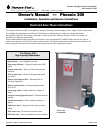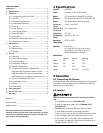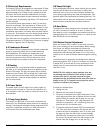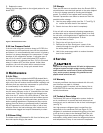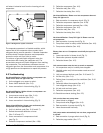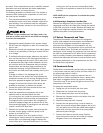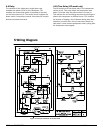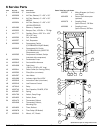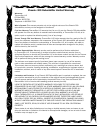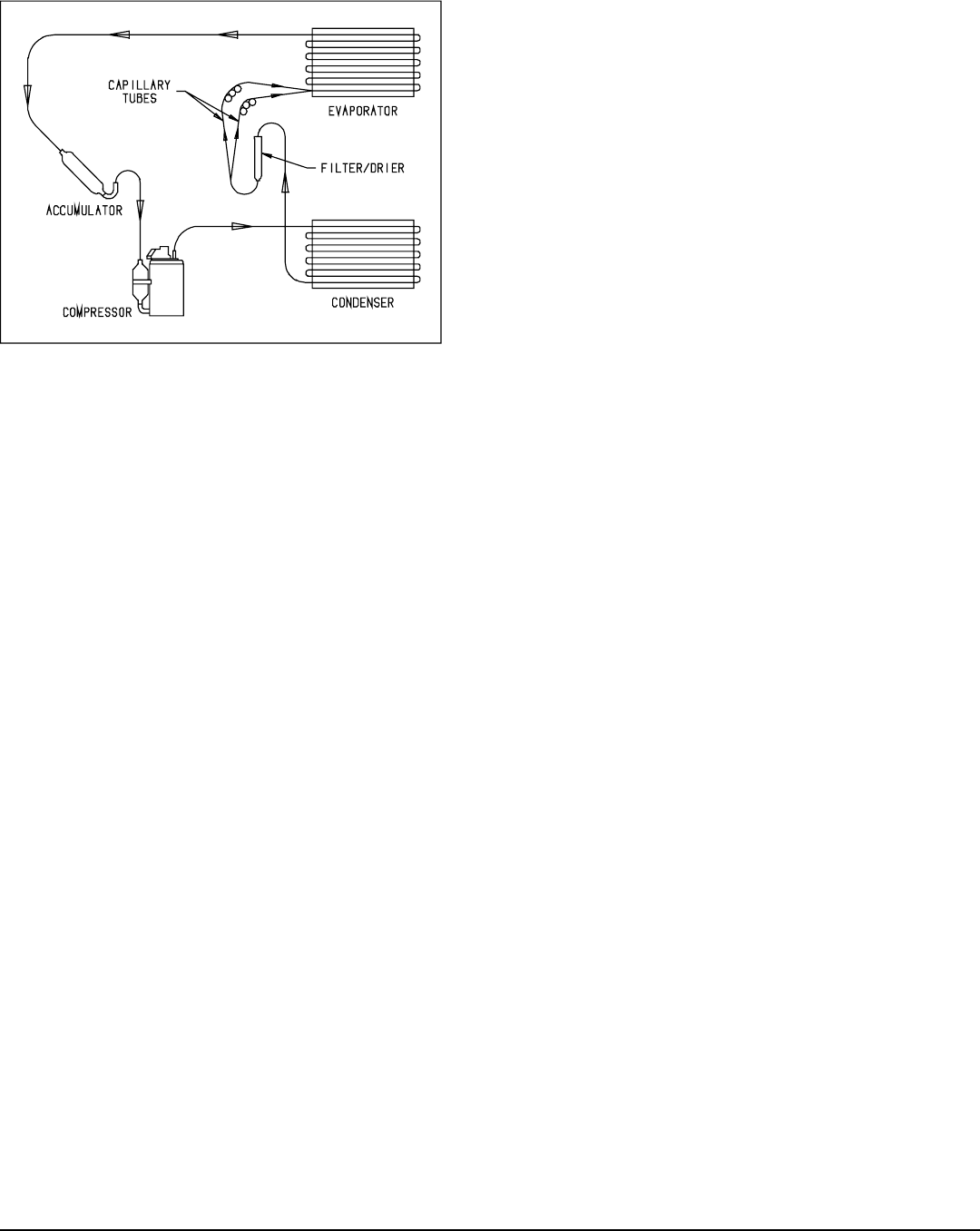
5
www.thermastor.com • sales@thermastor.comToll-Free 1-800-533-7533
coil where it absorbs heat from the incoming air and
evaporates.
The evaporator operates in a flooded condition, which
means that all the evaporator tubes contain liquid
refrigerant during normal operation. A flooded evaporator
should maintain constant pressure and temperature
across the entire coil, from inlet to outlet.
The mixture of gas and liquid refrigerant enter the
accumulator after leaving the evaporator coil. The
accumulator prevents any liquid refrigerant from reaching
the compressor. The compressor evacuates the cool
refrigerant gas from the accumulator and compresses it to
a high pressure and temperature to repeat the process.
4.3 Troubleshooting
No dehumidification. Neither blower or compressor run.
Power switch does not light when ON.
1. Unit unplugged or no power to outlet.
2. Power switch defective (Sec. 2.6).
3. Loose connection in internal wiring (Fig. 3).
No dehumidification. Neither blower or compressor run.
Power switch ON and lit.
1. Low pressure control open (Sec. 2.11).
2. Power switch defective (Sec. 2.6).
3. Loose connection in internal wiring (Fig. 3).
Some dehumidification, blower runs continuously but
compressor only runs sporadically.
1. Unit is in defrost cycle (Sec. 2.10 and 4.7).
2. Defrost thermostat defective or loose
(Sec. 2.10 and 4.7).
3. Loose connection in compressor circuit
(see Fig. 3).
4. Defective compressor overload (Sec. 4.6A).
5. Defective compressor (Sec. 4.6).
6. Defective relay (Sec. 4.9).
7. Defective time delay (Sec. 4.10).
No dehumidification. Blower runs but compressor does not.
Pump fail light not lit.
1. Bad connection in compressor circuit (Fig. 3).
2. Defective compressor capacitor (Sec. 4.6A).
3. Defective compressor overload (Sec. 4.6A).
4. Defective compressor (Sec. 4.6).
5. Defective relay (Sec. 4.9).
6. Defective time delay (Sec. 4.10).
No dehumidification. Pump Fail Light lit. Blower runs but
not compressor.
1. Bad connection in pump circuit (Fig. 3).
2. Pump float switch or safety switch defective (Sec. 4.8).
3. Pump motor defective (Sec. 4.8).
Blower does not run. Compressor runs briefly but cycles on
and off.
1. Loose connection in blower circuit (Fig. 3).
2. Obstruction prevents impeller rotation.
3. Defective blower (Sec. 4.5).
Unit removes some water but not as much as expected.
1. Air temperature and/or humidity have dropped.
2. Humidity meter and/or thermometer used are out of
calibration.
3. Unit has entered defrost cycle (Sec. 2.10 and 4.7).
4. Air filter dirty (Sec. 3.1).
5. Defrost timer incorrectly set for conditions (Sec. 2.10
and 4.7).
6. Defective defrost thermostat (Sec. 4.7)
7. Low refrigerant charge (Sec. 4.4).
8. Air leak such as loose cover.
9. Defective compressor (Sec. 4.6).
10. Restrictive exhaust ducting (Sec. 2.5)
Unit runs but does not pump water.
1. Hose kinked or plugged.
2. Pump check valve plugged (Sec. 4.8).
3. Bad connection in pump circuit (Fig. 3).
4. Hose disconnected internally.
Unit pumps water automatically but not when purge switch
is pushed.
1. Bad connection in purge switch circuit (Fig. 3).
2. Defective purge switch (Sec. 2.7).
Figure 2: Refrigeration system of Phoenix



